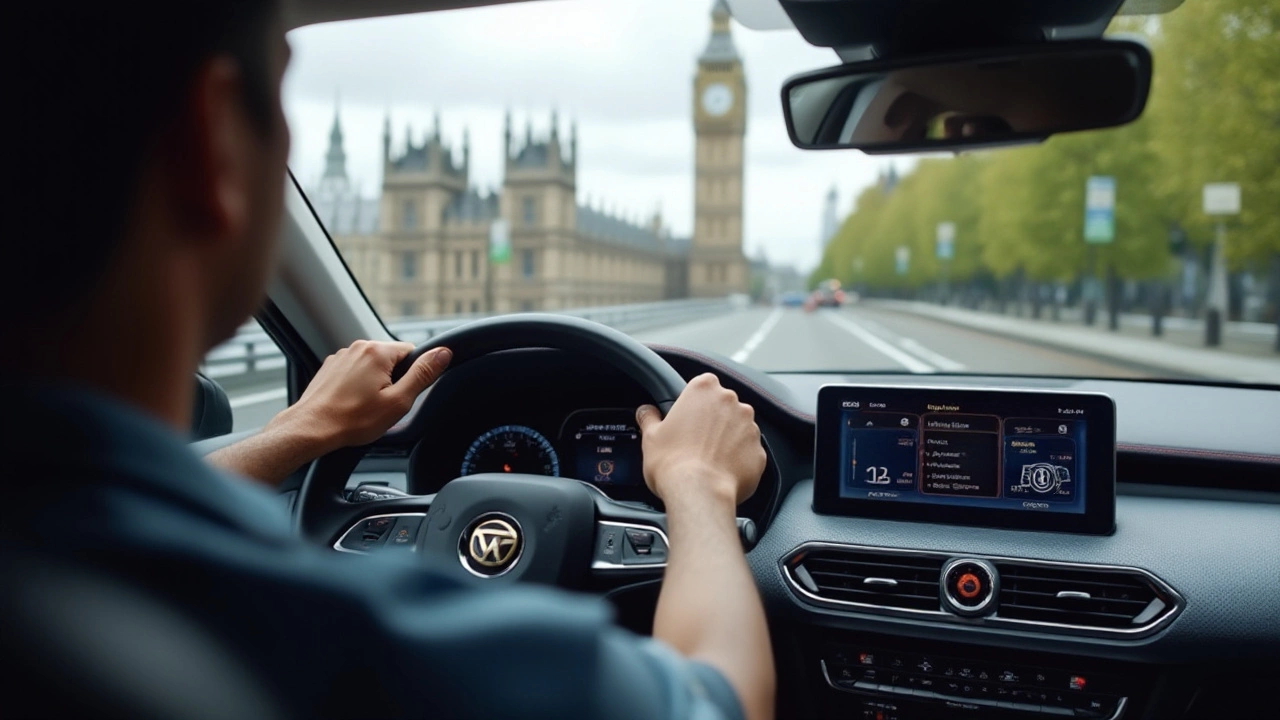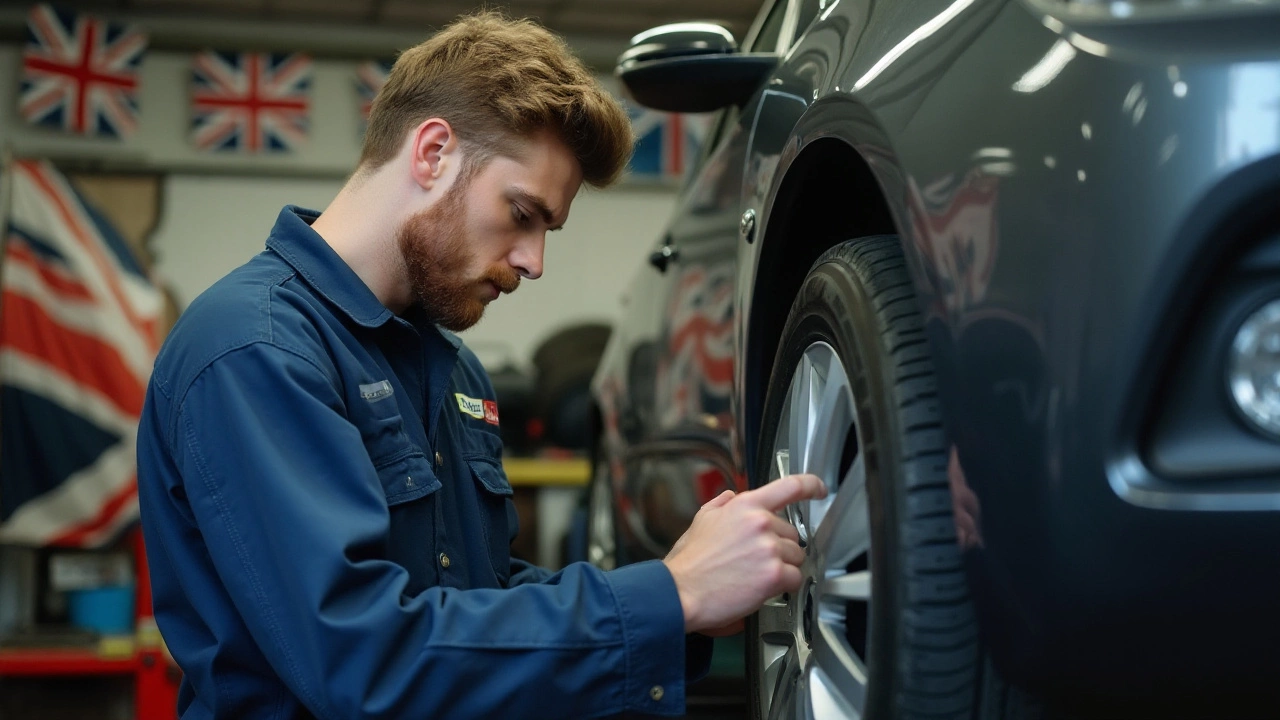Driving is more than just a way to get from one place to another—it's a responsibility that impacts the safety of everyone on the road. Whether you're a seasoned driver or just starting out, there's always room to refine your skills and enhance your awareness. In this article, we'll dive into seven key strategies that promote safe driving. From the vital concept of defensive driving to keeping your vehicle well-tuned, we'll cover the bases needed to keep you, your passengers, and fellow road users safe.
By embracing these practices, you can navigate any driving situation with confidence. Know the importance of not just following traffic rules but also understanding road conditions, being alert to others' mistakes, and maintaining focus behind the wheel. Join us as we explore these crucial tips that make a significant difference in your driving journey.
- Defensive Driving Techniques
- Understanding Road Signs and Signals
- Maintaining Vehicle Condition
- Avoiding Distractions
- Adjusting to Weather Conditions
Defensive Driving Techniques
Defensive driving is an essential skill that involves anticipating potential problems on the road and taking proactive steps to avoid them. It's about staying aware, staying prepared, and staying vigilant at all times. One fundamental principle of defensive driving is maintaining a safe following distance. This not only gives you more time to react if the car ahead stops suddenly, but it also leaves enough cushion so that you can safely change lanes if needed. Ideally, drivers should maintain at least a three-second gap between cars, which can be adjusted according to traffic conditions or weather. This practice helps in preventing rear-end collisions, one of the most common types of accidents.
Another crucial aspect is the habit of scanning the road ahead and checking mirrors regularly. This habit allows drivers to be aware of their surroundings fully and anticipate the actions of other vehicles, pedestrians, or cyclists. Regular mirror checks ensure that you are aware of vehicles in your blind spots, especially when preparing to change lanes or merge. It's critical to learn to be proactive about what might happen up the road. Observing road signs and traffic signals goes hand-in-hand with this. Defensive drivers don't just see; they actively observe and anticipate.
Predicting the Unexpected
Driving defensively means expecting the unexpected. Drivers should always be prepared for other people's mistakes and adjust accordingly. For instance, if you see a vehicle weaving between lanes, keeping a safe distance and staying alert is a sound strategy. The key is always leaving space for evasive maneuvers. This way, you enforce your safety and allow time to react to developing situations on the road. A useful strategy, known as “what if” thinking, involves constantly asking yourself questions like, “What if the car in front suddenly stops?” This mindset keeps you on the alert and ready to act.
According to the National Highway Traffic Safety Administration, "Being a mindful driver is about looking both ways and honing your ability to read a situation to avoid hazardous conditions."
Another tactic is the use of both turn signals and headlights to communicate your intentions to others. Enhancing visibility with headlights, even during the day, increases your car's visibility, providing clear signals to others. At intersections, where a significant proportion of crashes occur, coming to a full stop and scanning cross traffic—rather than relying solely on the green light—can prevent side-impact accidents.
Executing Defensive Maneuvers
Finally, it's important to adopt a calm and composed driving demeanor, even in frustrating traffic jams or when a green light turns red at the last second. Stress or road rage can result in aggressive driving behaviors that aren't safe or defensive. Focusing on the big picture, taking deep breaths, and staying patient allows us to keep calm, reducing the risk of an accident. While speeding might save you a minute or two, safe driving yields a lifetime of no regrets. By practicing defensive driving, you're taking a step toward responsible and safer driving for yourself and everyone else on the road.
Understanding Road Signs and Signals
Picture this: you're gliding down a road, and brightly colored signs and lights are popping up in your field of vision like characters in a play. Road signs and signals aren't just decorative elements—they're your guides and protectors on the journey. Knowing what these signs convey and why they are vital is key to ensuring safe driving. Each sign holds a specific instruction which, when followed, helps streamline traffic flow and minimizes accidents. From the common red STOP sign demanding an absolute halt to yield signs advising caution and right-of-way rules, these symbols keep roads smooth and traffic predictable. This awareness arms you with the intelligence necessary to make informed decisions swiftly, ensuring your safety as well as that of others around you. It's crucial to recognize that a misunderstanding or an oversight can lead to catastrophic outcomes. Honoring road signs is not just about obeying laws—it's a daily ritual in responsibility and safety.
Consider this fact: According to the National Safety Council, a significant percentage of road accidents are traced back to a failure in comprehending and responding to road signals appropriately. It's not merely about recognizing a sign; it involves interpreting its meaning correctly and executing the required action without delay. A red light at a busy intersection isn't just a disincentive to go—it's a potent reminder of potential repercussions of ignoring safety protocols. The same level of gravity should be applied to pedestrian crossings, roundabout navigations, and even temporary signals posted at construction sites—every sign has a purpose.
The next time you find yourself dismissing a road sign, remember the words of Henry Ford, "Quality means doing it right when no one is looking." Applying this perspective on the road cultivates a mindful driver, dedicated to excellence in following rules consistently.
A technique to stay informed is to regularly revise your understanding of less common signs. The road is evolving, just like everything else, incorporating new symbols as needs arise. Traffic authorities often tweak designs or introduce new signs to adapt to contemporary requirements. Engaging with updated literature on driving safety from local departments of transportation can keep you in the loop. An interactive approach where you quiz yourself can also go a long way in fortifying knowledge retention.
If you're ever curious about your driving competence in relation to road signs, tracking your drive with a friend could spin into a healthy challenge. Ask them to spot signs and quiz you on their meanings. It not only solidifies your grasp of road signals but also makes for an entertaining yet educational pastime. So, next time you step into your car, imbibe the mindset of both a learner and an enforcer of road literacy. Alertness isn't merely a characteristic of a good driver—it's the hallmark of a responsible one. Recognizing and respecting the varied signage is not just a skill but a necessity for navigation.

Maintaining Vehicle Condition
One of the pillars of safe driving is keeping your vehicle in top-notch condition. This not only prolongs your car's life but also ensures your safety and everyone else's on the road. Regular maintenance checks are vital; they help spot potential issues before they become major headaches. From oil changes to brake inspections, establishing a regular schedule with a trusted mechanic ensures that your car runs smoothly. It might feel like a chore, but think of it as an investment in safety.
Paying attention to your car’s warning lights is another aspect of good vehicle maintenance. These lights are your car's way of communicating issues, so never ignore them. A check engine light might seem ambiguous, but it's worth investigating even if your car seems to drive fine. Advanced diagnostic tools at car shops can identify the problem, often saving money and hassle down the road. Keeping your car free of obvious defects like broken lights or worn tires also reflects your commitment to safe driving.
Maintaining tire pressure is an integral part of road safety, impacting everything from fuel efficiency to traction on the road. Underinflated tires can be misleading, as they generally appear fine, but they worsen gas mileage and are more prone to blowouts. It's crucial to check tire pressure monthly and before long trips. The recommended pressure is usually found on a label inside the driver’s door or in the owner’s manual. Proper tire maintenance can prevent unexpected accidents and keep your driving experience smooth.
Let’s not forget about regular oil changes and fluid checks. Oil is your car's lifeblood, minimizing friction in the engine and keeping it cool. Ignoring oil changes can result in severe engine damage, leaving you stranded. Transmission, brake, and steering fluids also require periodic checks, and topping them off as needed helps maintain the vehicle's overall health. An often overlooked part of car maintenance is keeping the air filter clean, which improves engine performance and fuel efficiency.
"I always encourage drivers to develop a simple checklist for their car’s upkeep," says Laura Adams, a renowned automotive expert. “Following it diligently will save money and lives.”
In addition to basic mechanical upkeep, washing your vehicle and protecting the paint from the elements also contributes to its longevity and appearance. Regular washing removes dirt and debris that can cause rust, particularly in areas exposed to road salt during winter. Applying a sealant or wax every six months can keep your car looking new, but more importantly, it maintains the structural integrity of the body.
For a more detailed understanding of the timeframes and specific tasks involved in vehicle maintenance, the chart below highlights standard recommendations:
| Task | Frequency |
|---|---|
| Oil Change | Every 5,000 - 7,500 miles |
| Tire Pressure Check | Monthly |
| Brake Inspection | Every 10,000 miles |
| Fluid Levels | Monthly |
| Air Filter Replacement | Annually or every 15,000 miles |
Finally, taking care of your vehicle isn’t just about technical tasks—it’s a mindset. Appreciating the importance of these routine checks ensures a safe and reliable driving experience. It’s not just about solving problems as they arise, but about preventing them from happening. Your vigilance in maintaining your car transforms it from being just a machine to a trusted companion on your journeys.
Avoiding Distractions
Driving requires our full attention. With the increasing number of distractions available to drivers, maintaining focus on the road is more crucial than ever for road safety. Some of the most common distractions that drivers face include mobile phones, in-car devices, eating, and even engaging in conversations with passengers. It's easy to underestimate the risks associated with taking your eyes off the road, even for a few seconds. According to the National Highway Traffic Safety Administration, in 2022 alone, more than 3,500 people were killed in crashes involving a distracted driver. This stark statistic highlights the importance of understanding and mitigating distractions while driving.
One effective strategy to minimize distractions is to plan your journey before setting off. Adjust car features such as the radio or GPS, and secure any loose items that might become distracting during the drive. Keeping your eyes on the road and hands on the wheel is not just a catchphrase; it’s a practice that could save lives. Imagine your focus like a beam of light that should be aimed directly on the road ahead. Anything that diverts this beam jeopardizes your awareness and reaction time. For instance, if you must use your phone, it’s wiser to pull over at a safe spot rather than try to multitask.
One insightful piece of advice comes from safety expert, David Teater, from the National Safety Council, who once said,
"Distractions come in many forms, but they all steal time and attention from what truly matters on the road. Driving requires our full cognitive and visual engagement to be both effective and safe."This quote encapsulates the need for deliberate and focused driving.
Parents and guardians also play an essential role in setting an example for young drivers. By demonstrating sound driving habits, like reducing in-car distractions and practicing mindfulness, they instill the importance of safe driving practices from an early age. This behavioral modeling helps create a new generation of drivers who prioritize safe driving.
To help drivers better understand the types of distractions they might encounter, here is a simple table explaining each distraction type:
| Type of Distraction | Description |
|---|---|
| Visual Distraction | Taking your eyes off the road (e.g., reading a text). |
| Manual Distraction | Taking your hands off the wheel (e.g., eating or drinking). |
| Cognitive Distraction | Taking your mind off driving (e.g., daydreaming). |
In conclusion, avoiding distractions is about cultivating a mindset where safety comes first. Being proactive and deliberate in maintaining focus can significantly reduce the risk of accidents. It's an ongoing commitment to safe driving, where every decision on the road reflects our understanding of its importance. By prioritizing attention and minimizing distractions, we not only safeguard our lives but also contribute to the well-being of everyone sharing the roads with us.

Adjusting to Weather Conditions
When you're out on the road, the weather can play tricks and dramatically change driving conditions. It's essential to know how different weather patterns affect your driving experience. Let's start with rain. Even light showers can make roads slippery, due to oil mixing with water on the surface. During heavy rain, visibility can be significantly reduced, and aquaplaning—a situation where your tires lose contact with the road due to a layer of water—becomes a real risk. This condition can cause a loss of steering control. It's crucial to reduce speed and increase the distance between vehicles during these times. Utilize your headlights and, if visibility gets too low, consider pulling over safely until conditions improve.
Snow and ice present unique challenges. Roads can turn into slick skating rinks. Having snow tires and practicing gentle acceleration and braking can make a substantial difference. Always keep a snow scraper and a blanket in your car, just in case you get stuck. Statistics from the Federal Highway Administration reveal that over 116,000 people are injured annually in vehicle crashes due to snowy or icy conditions. These numbers show the importance of extra caution. And don't forget: when driving in fog, use low beams instead of high beams, which can reflect light and decrease visibility.
"The best drivers know that the interaction between man, weather, and machine can be just as unpredictable as it is inevitable," remarked legendary driving instructor Tony Scotti.
Summer heat can also affect road safety in ways we might overlook. Tires can overheat and blow out, especially on long road trips. Check your tire pressure and keep an eye on your vehicle's temperature gauge. Wildfire smoke can be another summer hazard, reducing visibility and air quality. In dusty conditions, slowing down and using lights is a safe approach, and carrying extra water can be life-saving. And then there’s the wind. Strong gusts can push your car sideways, especially if you’re driving a higher profile vehicle or towing a trailer. It's wise to keep a firm hold on the steering wheel and be mindful when overtaking larger vehicles.
Understanding how to adjust your driving techniques according to the weather is a safe driving skill that can't be underestimated. By staying informed and prepared, you're safeguarding not only your own journey but also the well-being of everyone sharing the road with you. Embracing a proactive approach can make a significant difference in preventing accidents and ensuring a smooth ride, no matter what Mother Nature throws your way. Whether it's rain, snow, sun, or fog, being adaptable helps to master the art of safe driving no matter the weather conditions you face.

